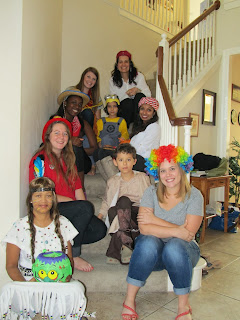Liam’s talking
Liam is looking for a formula in our
requests. He is looking for the exact sentences that we want. He is looking for
the “right answer”, instead of tapping to his spontaneous language.
We need to mix it up again!
Scenario
1:
Liam: “Seaweed”
US: “I see it” [use your hands to pretend to open it and
eat it]
Liam: “I want seaweed”
US: [smiling, thumbs up, shake your head up and down,
acknowledge, but do not act or talk]
Liam: “I would like to eat seaweed” or “Where is the
seaweed?” or “Help me to open the seaweed” or “I want to eat seaweed”, etc.
Scenario
2:
Liam: “Jumping”
US: “I love to jump” [use your arms to pretend that they
are forming a circle, like the trampoline]
Liam: “I want jumping”
US: [smiling, thumbs up, shake your head up and down,
acknowledge, but do not act or talk]
Liam: “I want to jump with ____” or “I want to jump
together” or “Jump with me” or “Let’s jump”, etc.
Scenario
3:
Liam: “Ladybug”
US: “The ladybug is here”
Liam: “I want ladybug”
US: [smiling, thumbs up, shake your head up and down,
acknowledge, but do not act or talk]
Liam: “Throw me the ladybug” or “I want the ladybug on
the bed” or “Look for the ladybag” or “Find the ladybug”, etc.
What we want from Liam is variety +
spontaneity. Since he is trying to guess what we want and trying to get our
help and clues, we will switch to a new strategy:
-
When he says one word, we make a general comment.
-
When he says an “I want” sentence, we
acknowledge without talking and we give him lots of time to think. Be
persistent. He may keep repeating the “I want” sentence. Keep acknowledging
with a smile so that he can tap into his language. He knows it all, he needs
practice generating the responses by himself.
Liam getting upset
When Liam gets MAD and starts crying, we need
to remain super calm and comfortable with our decision. We can tell him: “I see
you are mad, but we are still going to do it this way” This applies for example
to not throwing things he should not throw, like his cars, or to not giving him
things right away when he says “I want” because we want more specificity. He gets upset, but you just remain calm. Like
with Duchis in the old time, we could also tell him: “Liam, if you want to cry,
that’s fine, but this is how we will do it. When you want to stop crying, talk
to me. I will be here playing.” The idea is to let them know that they can
choose to be MAD, but that we will choose to be calm, and that once they calm
down, we can talk and keep playing. When they are crying, we CANNOT do what
they want, because if we do, the message in their head is: “It worked!! Crying
worked!!! I need to do it more often to get what I want!”. We need to show
them that crying does NOT work.
We are going to put the sentences of “I don’t
like” and “I don’t want” on hold for now.
When Liam is upset, instead of taking is as a
language opportunity, we will take it as a flexibility opportunity. Alex’
theory is that when the kids are frustrated, it is very hard for them to manage
the frustration and that blocks words like “I don’t like …” or “I don’t want …”
So, according to this, it is only when they can manage the frustration better
that they can at the same time verbalize the words. Show Liam that he can be
calm, even when he does NOT get what he wants.
Liam’s fine motor

































































